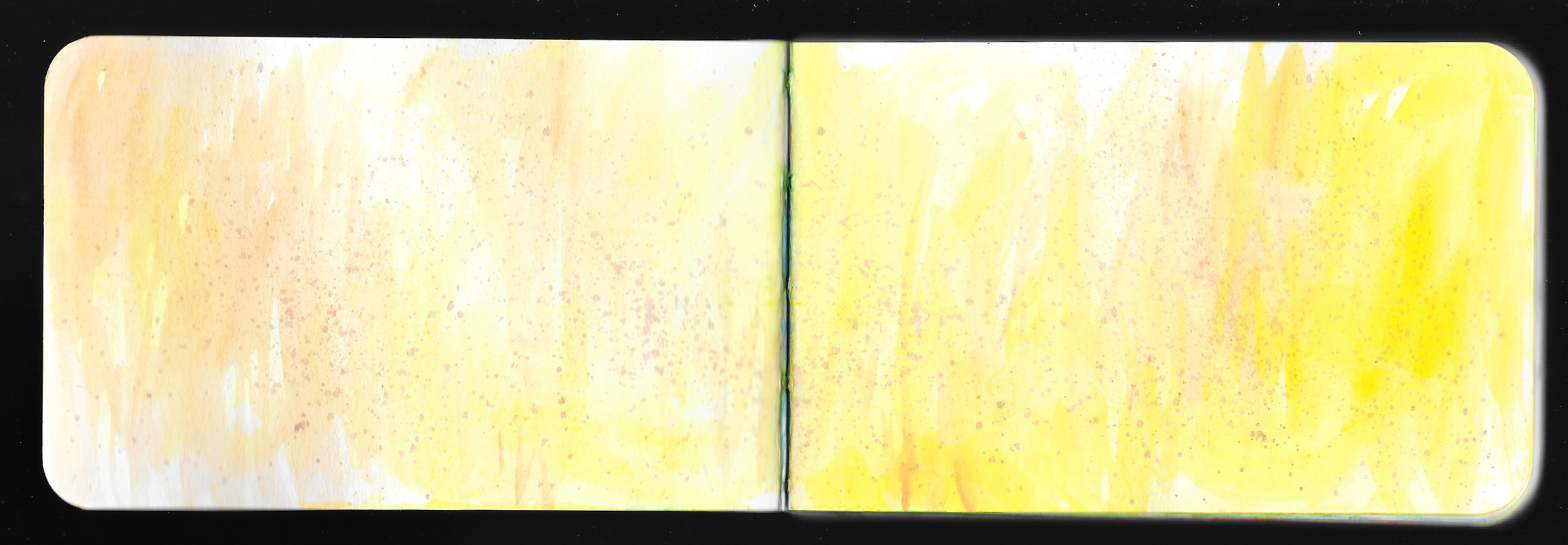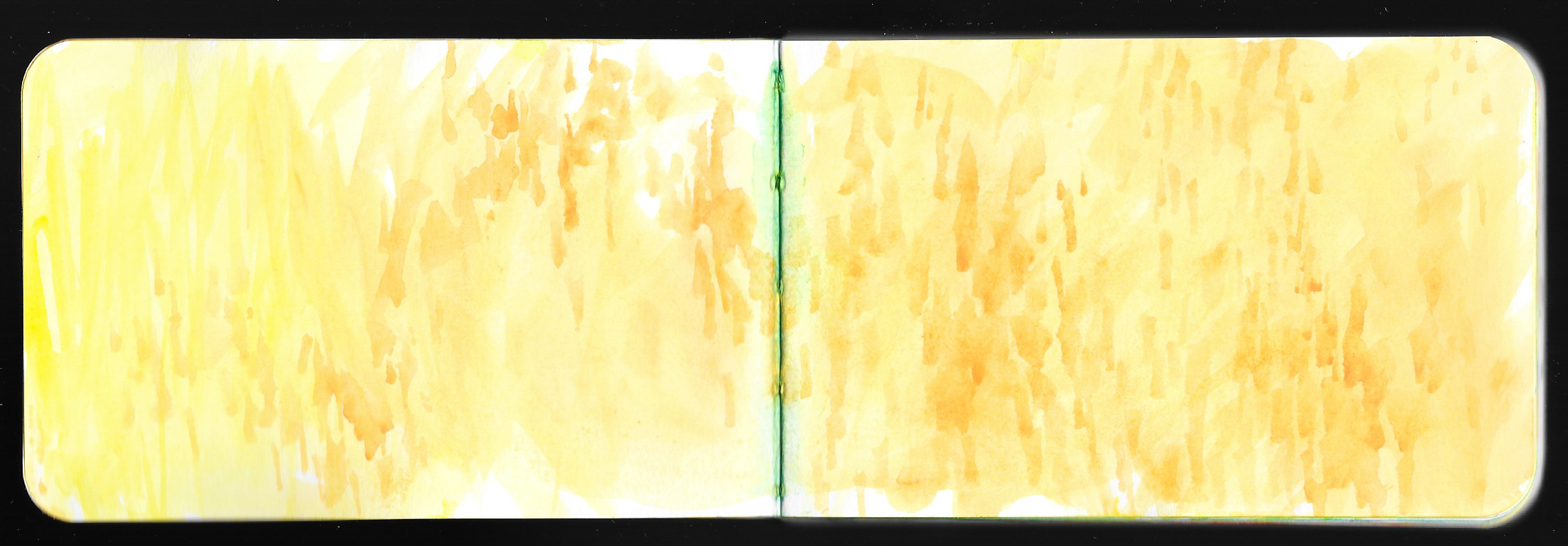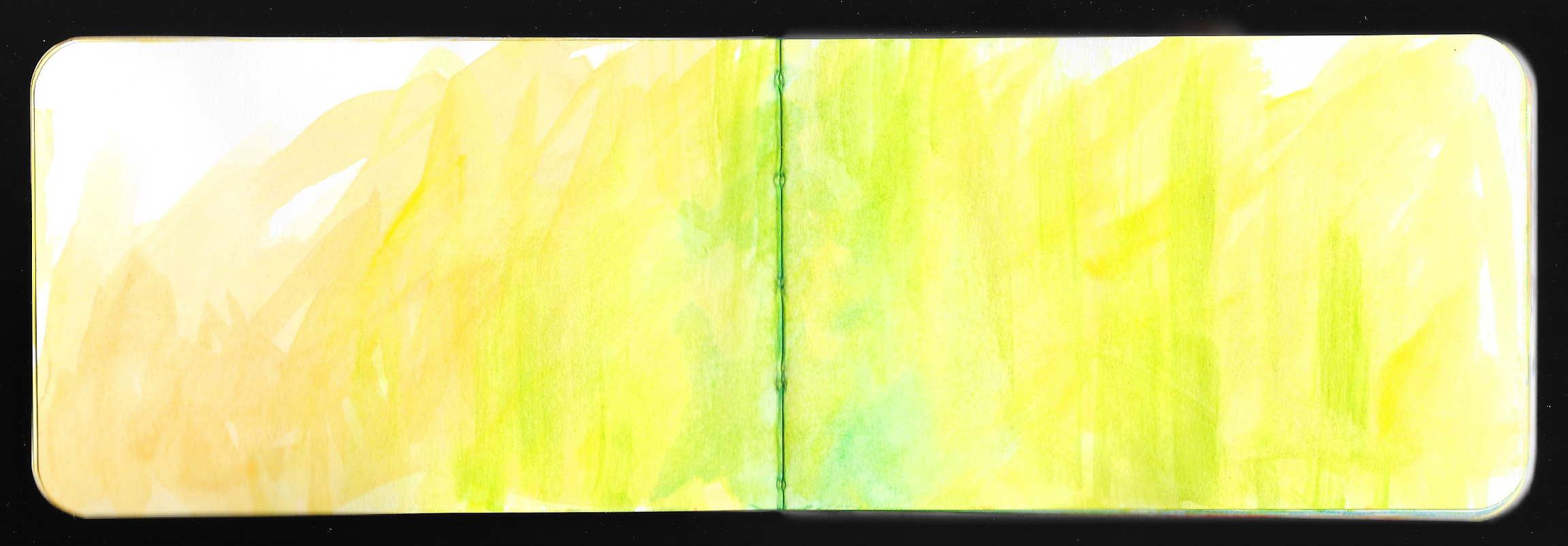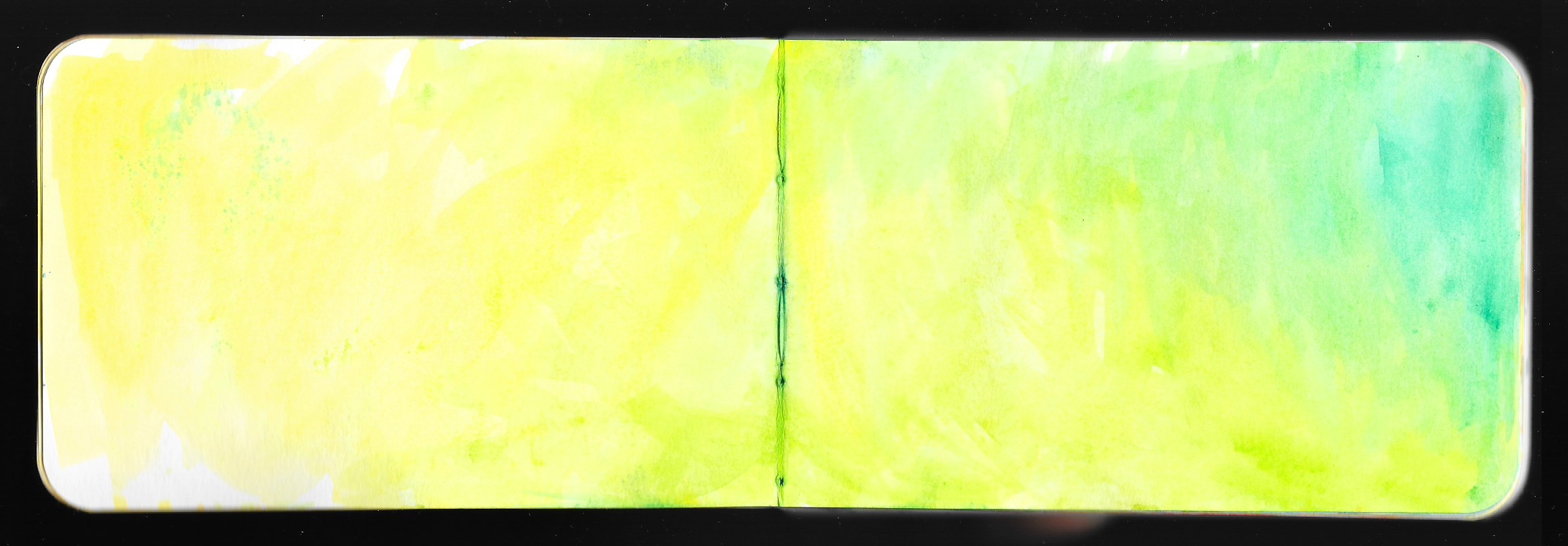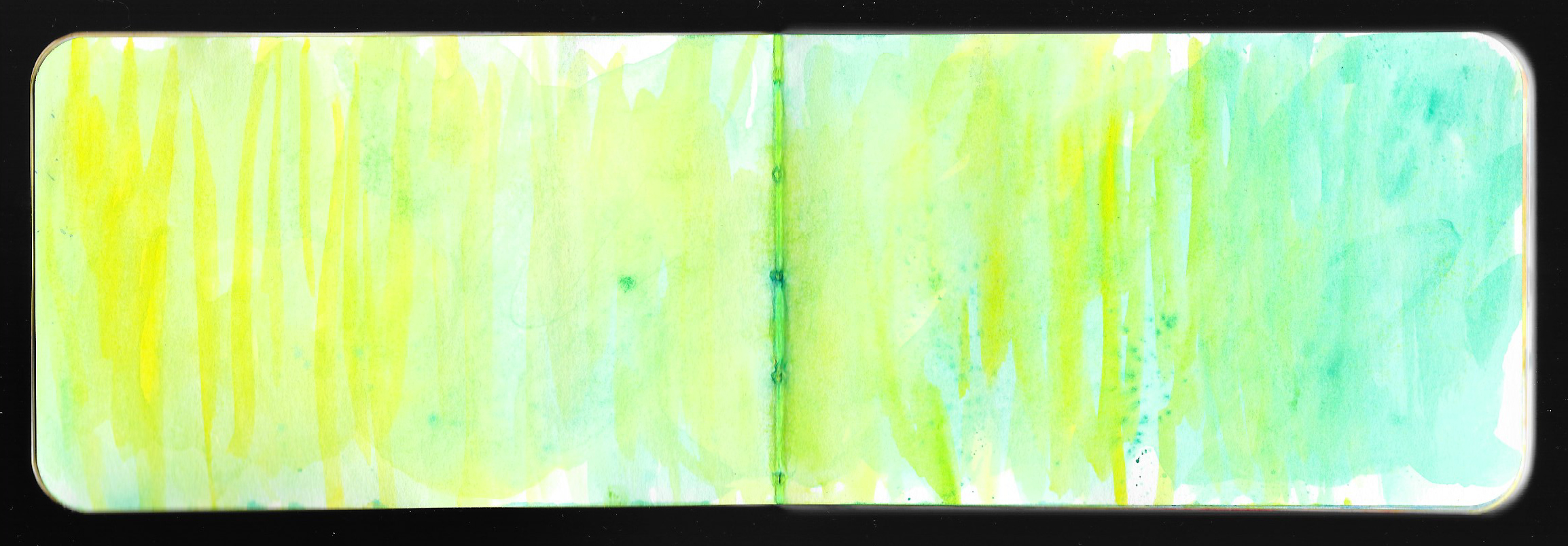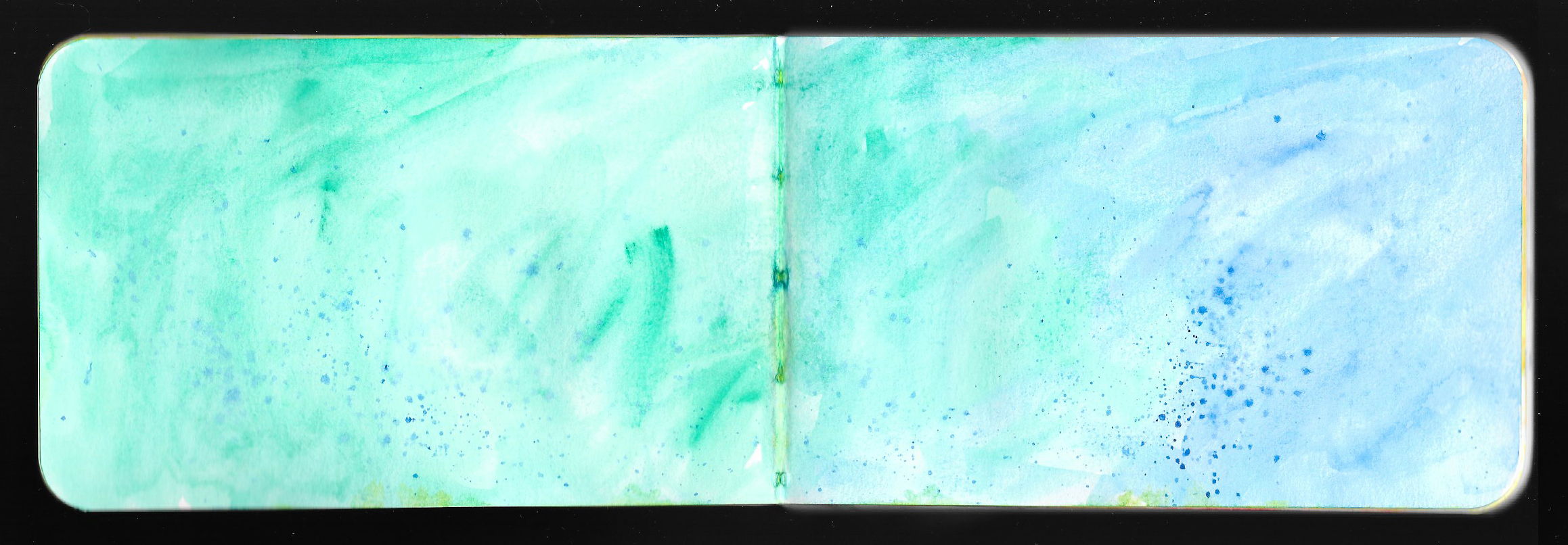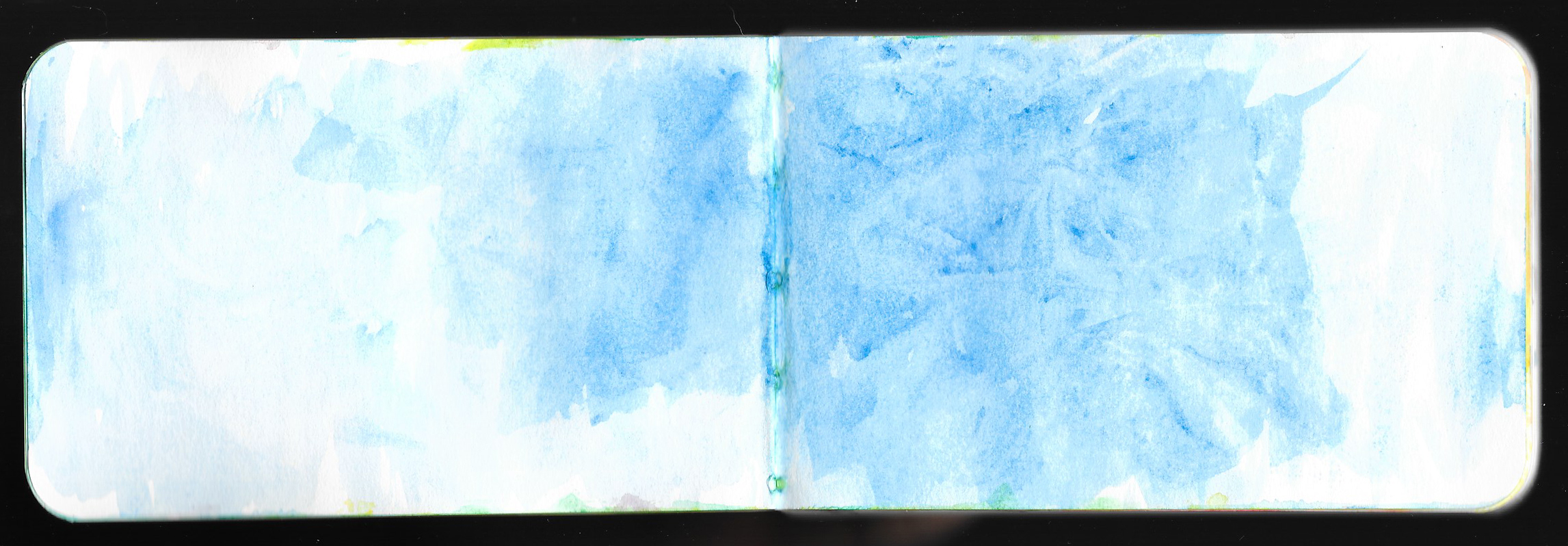Welcome to the first lesson in the Creative Prayer Book. In this lesson, I’m using watercolor paint, but feel free to use whatever material you wish. My main objective is to simply engage the blank pages of my book and get backgrounds started on some of my pages using the watercolor paint. I want to get a good number of pages started, so I’m jumping around in my book and not worrying about trying to make finished or completed pages yet. I’m not even worrying about the prayers or quotes that I will eventually use. I just want to get started working in the book.
Depending on the number of pages your book has, you might engage all of your pages or you might focus on a certain number of pages. It also depends on how much time you have, but even if you only have 15 or 20 minutes you can get started on quite a few pages.
In the video, I only show a few techniques, but I am concentrating on trying to allow colors and techniques to flow from one page to another so that one page ties into the next. I can do this by using similar colors, lines, and shapes or by simply continuing what I did on one page onto the next. Use any techniques that you like, but below are a few to try that I show in the video.
Wash - A wash of watercolor paint is a light thin layer of paint. By keeping the color light at this point, it makes it easier to build layers later. It might be difficult to deal with dark colors later on as I draw, paint, and write to develop the pages further.
Blends and Bleeds - Two wet colors of watercolor will bleed together when they touch, allowing you to blend colors together to create gradients. This allows you to add some variety of color to your pages.
Splattering - By flicking the bristles with your finger, you can create tiny splatters of paint. This is perfect for adding a bit of texture to blank pages or to pages you’ve already started.
Found Stencils - Items like plastic mesh make great stencils for adding textures and shapes to your pages. By painting through the openings you can add subtle patterns, but with thicker items, you might have to use a stiff brush and tap the paint through the openings.
Layering - Don’t be afraid to go back and add color, brush marks, lines, and textures on top of pages that are already dry. You can create visually interesting backgrounds that way.
If you you’re interested in other techniques, try using plastic wrap, salt, rubbing alcohol, sponges, or string with the paint. Just experiment and have some fun with the paint as you create backgrounds, and don’t worry about being neat or tidy. Don’t worry about filling the page completely, and work on as many or as few pages as you wish. Just keep the colors on the light side so that you can layer and add in future lessons.
Next week, I’ll focus on adding collage and a little drawing to these pages and to blank pages as well.
Happy creating!

